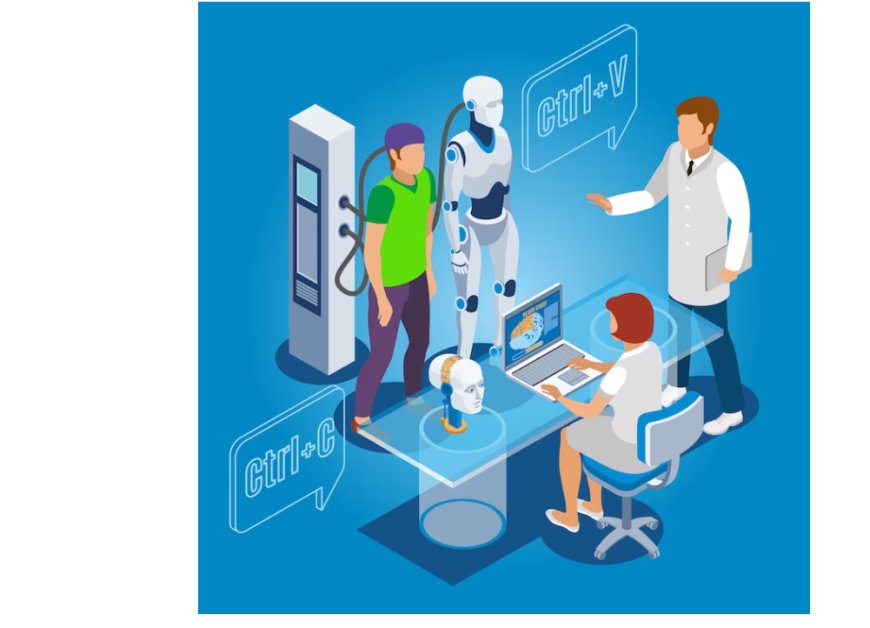AI: Evolution of Personal and Professional Data Analysis
Explore the evolution of personal and professional data analysis with AI. Discover the transformative trends and insights shaping the future of data-driven decision-making.

The rapid advancement of Artificial Intelligence (AI) has transformed the landscape of data analysis, revolutionizing both personal and professional spheres. In the realm of personal data, AI-driven tools now tailor recommendations, track health metrics, and optimize financial decisions, all while raising critical questions about privacy and ethics. Meanwhile, in the professional arena, AI has become indispensable, automating mundane tasks, enabling predictive analytics, and empowering industries from healthcare to finance.
Historical Perspective
The historical perspective of the evolution of AI in personal and professional data analysis provides crucial insights into how artificial intelligence has transformed the way we handle data. Before the advent of AI, data analysis in both personal and professional contexts was a largely manual and time-consuming process. Analysts and researchers relied on spreadsheets, statistical software, and rudimentary tools to crunch numbers, generate reports, and draw conclusions from data sets.
In the early stages, data analysis was limited by human capacity and the constraints of technology. However, as computing power increased and algorithms became more sophisticated, the potential for AI to revolutionize data analysis began to emerge. Early AI pioneers explored expert systems and rule-based approaches to automate certain aspects of data analysis. These early efforts laid the foundation for more advanced AI applications in the field.
Key milestones in the development of AI for data analysis include the introduction of machine learning techniques, such as neural networks, decision trees, and clustering algorithms. These innovations allowed AI systems to learn from data, adapt to changing patterns, and make predictions or recommendations. Over time, AI became capable of handling vast amounts of data more efficiently and accurately than humans, making it an invaluable tool in both personal and professional data analysis.
Data Analysis
Personal Data Analysis refers to the use of artificial intelligence (AI) and data analytics techniques to gain insights and make informed decisions about an individual's personal life and activities. This field has experienced significant growth and transformation in recent years, thanks to advances in AI algorithms, the proliferation of personal data-generating devices and applications, and the increasing importance of data-driven decision-making in people's daily lives.
One of the most prominent applications of AI in personal data analysis is personalized recommendations. Companies like Netflix, Amazon, and Spotify have harnessed the power of AI to analyze individuals' viewing, shopping, and listening habits. By doing so, they can provide personalized content and product recommendations, enhancing user satisfaction and engagement.
Health and fitness tracking is another vital aspect of personal data analysis. Wearable devices, smartphone apps, and connected health monitors collect vast amounts of data about an individual's physical activity, sleep patterns, and vital signs. AI algorithms can process this data to offer personalized health insights, recommend exercise routines, and even detect potential health issues early on.
Additionally, AI-driven personal finance management tools are gaining popularity. These applications analyze an individual's spending habits, income, and financial goals to provide budgeting advice, and investment recommendations, and help with long-term financial planning.
Professional Data Analysis
Professional data analysis has witnessed a profound transformation with the integration of Artificial Intelligence (AI) into various industries. AI technologies have revolutionized the way organizations extract insights, make informed decisions, and optimize their operations. In this context, professional data analysis encompasses a wide range of activities, from automating routine tasks to conducting advanced analytics and predictive modeling.
One of the most significant impacts of AI in professional data analysis is the automation of repetitive tasks. Previously, data analysts and data scientists spent a substantial amount of time on data preprocessing, cleaning, and basic reporting. AI-powered tools and algorithms can now handle these mundane tasks, allowing professionals to focus their efforts on more complex and strategic aspects of analysis. This has not only increased productivity but also reduced the margin for human error.
AI has also brought about a paradigm shift in the realm of advanced analytics. With machine learning algorithms, professionals can build predictive models that forecast future trends, detect anomalies, and make data-driven recommendations. For example, in finance, AI-driven algorithms are used for risk assessment and fraud detection, while in healthcare, predictive analytics can help identify potential outbreaks or patient health deterioration.
Moreover, the integration of AI has transformed the field of business intelligence (BI) and decision support. AI-driven BI tools can sift through massive datasets, extract actionable insights, and present them in user-friendly dashboards. This empowers decision-makers to make faster and more informed choices, leading to improved business strategies and outcomes.
Future Trends
The section on "Future Trends" in your outline would explore the anticipated developments and directions in the field of AI-driven data analysis. Here are some potential explanations and subtopics you might consider for this section:
- Continued Advancements in AI Algorithms: Describe how AI algorithms are expected to become more sophisticated and capable of handling increasingly complex data analysis tasks. Mention areas such as natural language processing, computer vision, and reinforcement learning, which are likely to play a vital role in future data analysis.
- Increased Automation: Discuss how automation in data analysis will continue to grow. More routine and repetitive data processing tasks will be automated, allowing analysts and professionals to focus on higher-level decision-making and problem-solving.
- Integration of AI and Big Data: Explain how AI will become more intertwined with big data technologies. This could include discussing the use of AI to analyze massive datasets, extract insights, and drive data-driven decision-making in various industries.
- Explainable AI: Elaborate on the need for AI models to become more explainable and interpretable. As AI is integrated into critical decision-making processes, there will be a growing demand for transparency in how AI arrives at its conclusions.
- AI in Edge Computing: Discuss the trend of deploying AI capabilities closer to the data source in edge computing environments. This enables real-time analysis of data without relying on centralized cloud infrastructure, which is particularly important for applications like IoT.
Ethical and Legal Considerations
Ethical Considerations
-
Data Privacy: Ensuring individuals' data is handled and stored securely, with consent and transparency.
-
Bias Mitigation: Identifying and addressing biases in AI algorithms to ensure fair and equitable outcomes.
-
Transparency: Making AI systems more understandable and interpretable to build trust and accountability.
-
Accountability: Determining who is responsible when AI systems make decisions or take actions.
-
Ethical AI Design: Incorporating ethical principles into the development and deployment of AI systems.
-
Informed Consent: Ensuring individuals are informed about how their data will be used in AI applications.
Legal Considerations
-
Regulatory Compliance: Complying with data protection laws (e.g., GDPR, CCPA) and industry-specific regulations.
-
Liability: Determining legal liability in cases of AI-related accidents or harm caused by AI decisions.
-
Intellectual Property: Protecting intellectual property rights in AI creations, algorithms, and data.
-
Data Governance: Establishing data governance policies and practices to ensure legal compliance.
-
Antitrust: Addressing potential antitrust concerns related to AI dominance in markets.
-
International Laws: Navigating legal frameworks for cross-border data sharing and international AI collaborations.
The evolution of AI in both personal and professional data analysis has ushered in a transformative era. From personalized recommendations to complex business insights, AI has become an indispensable tool. However, this rapid advancement also brings forth ethical and legal challenges that demand careful consideration. As we continue to navigate this dynamic landscape, responsible and ethical use of AI will be paramount in harnessing its full potential while safeguarding privacy, fairness, and security in data analysis. The future promises even more exciting innovations, making AI an integral part of how we understand and utilize data in both our personal lives and professional endeavors.











































